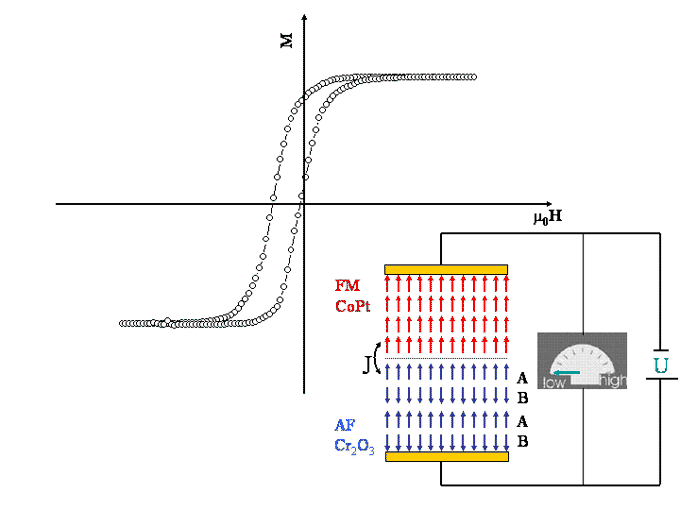Department of Physics and Astronomy: Publications and Other Research

Christian Binek Publications
Document Type
Article
Date of this Version
3-23-2017
Citation
PHYSICAL REVIEW APPLIED 7, 034015 (2017).
DOI: 10.1103/PhysRevApplied.7.034015
Abstract
Voltage- and temperature-tuned ferromagnetic hysteresis is investigated by a superconducting quantum-interference device and Kerr magnetometry in a thin-film heterostructure of a perpendicular anisotropic Co/Pd ferromagnet exchange coupled to the magnetoelectric antiferromagnet Cr2O3. An abrupt disappearance of exchange bias with a simultaneous more than twofold increase in coercivity is observed and interpreted as a competition between the effective anisotropy of Cr2O3 and the exchange-coupling energy between boundary magnetization and the adjacent ferromagnet. The effective anisotropy energy is given by the intrinsic anisotropy energy density multiplied by the effective volume separated from the bulk through a horizontal antiferromagnetic domain boundary. Kerr measurements show that the anisotropy of the interfacial Cr2O3 can be tuned isothermally and in the absence of an external magnetic field by application of an electric field. A generalized Meiklejohn-Bean model accounts for the change in exchange bias and coercivity as well as the asymmetric evolution of the hysteresis loop. In support of this model, the reversal of the boundary magnetization is experimentally confirmed as a contribution to the magnetic hysteresis loop


Comments
© 2017 American Physical Society. Used by permission.